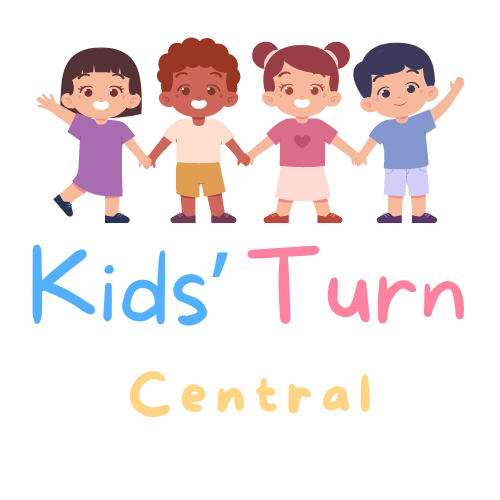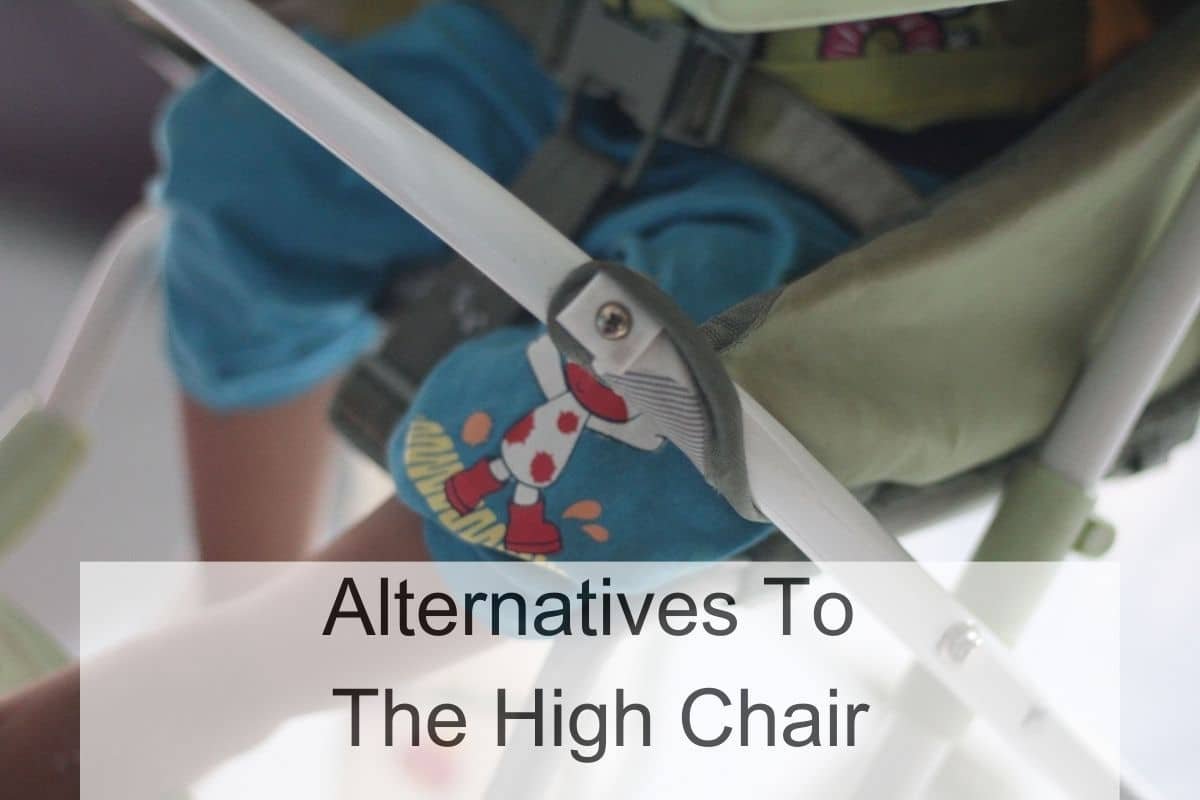As a parent, I know how important it is to have the right gear to make life with a baby easier. One of the most essential pieces of baby gear is a high chair. However, traditional high chairs can be bulky, expensive, and take up a lot of space in your home. Fortunately, there are plenty of alternatives to the high chair that are more affordable, space-saving, and just as effective.

Booster seats are a great alternative to high chairs when you don’t want to keep a bulky chair around your home. They are smaller, portable, and can be attached to any regular chair. Some booster seats even come with a tray, making them a versatile option for feeding your baby. Additionally, booster seats can be used as your child grows, making them a long-lasting investment.
Another alternative to the traditional high chair is a travel harness. These harnesses attach to any regular chair, making them a great option for feeding your baby on the go. They are lightweight, compact, and easy to pack in your diaper bag or luggage. Additionally, some travel harnesses come with a built-in tray, making them a convenient and versatile option for feeding your baby.
Why Consider Alternatives to High Chairs

As a parent, I understand how important it is to provide a safe and comfortable space for my child during mealtime. However, high chairs can be bulky and take up a lot of space in the home. That’s why I started to explore alternatives to high chairs.
One reason to consider alternatives to high chairs is the space-saving factor. Many high chair alternatives are compact and can be easily stored when not in use. For example, booster seats can be attached to a regular chair and removed when the child is done eating. This can be especially helpful for families with limited space in their homes.
Another reason to consider high chair alternatives is the cost factor. High chairs can be expensive, and if you’re on a tight budget, it may not be feasible to invest in one. Many high chair alternatives are more affordable and can serve the same purpose. For example, a travel harness can be used to secure your child to any chair, making it a versatile and cost-effective option.
Finally, high chair alternatives can be more convenient for families on-the-go. Many high chair alternatives are portable and can be easily taken with you when traveling or dining out. For example, a hook-on high chair can be attached to any table, making it a convenient option for restaurants or family gatherings.
Types of High Chair Alternatives

When it comes to feeding our little ones, we all know how important it is to have a safe and comfortable place for them to sit. While traditional high chairs have been the go-to for many years, there are now many alternatives available that can be more practical and cost-effective. Here are three types of high chair alternatives that I recommend:
Booster Seats
Booster seats are a great option for parents who want a high chair alternative that is portable and space-saving. These seats can be attached to a regular chair and feature a tray for your little one to eat from. They are also great for traveling or dining out, as they can easily be packed up and taken with you.
Hook-on Chairs
Hook-on chairs are another popular high chair alternative that can be attached to the edge of a table. They are great for saving space and can be easily removed when not in use. Hook-on chairs are also a great option for families who like to travel or dine out, as they are lightweight and easy to transport.
Floor Seats
Floor seats are a great high chair alternative for parents who want a more natural approach to feeding their little ones. These seats sit directly on the floor and can be used for feeding or playtime. They are also great for babies who are learning to sit up on their own, as they provide a safe and comfortable place for them to practice.
Safety Considerations

As a parent, safety is always a top priority when it comes to our little ones. When considering alternatives to the high chair, there are a few safety considerations to keep in mind.
Stability and Harness Systems
One of the most important things to consider when choosing an alternative to the high chair is stability. You want to make sure that the seat is sturdy and won’t tip over, especially if your child is an active eater. Look for seats with a wide base or straps that can secure the seat to a chair or table.
Another important safety feature to consider is the harness system. A good harness system will keep your child securely in the seat and prevent them from falling out. Some alternatives to high chairs come with a five-point harness system, which is the safest option.
Age and Size Appropriateness
When choosing an alternative to the high chair, it’s important to consider your child’s age and size. Some seats may not be appropriate for younger babies or larger toddlers. Make sure the seat is designed for your child’s age and weight range.
It’s also important to make sure that the seat is comfortable for your child. Look for seats with padded cushions or adjustable features that can accommodate your child’s size and shape.
Space-Saving Solutions

As a parent, I know that space is a precious commodity, especially when it comes to baby gear. Fortunately, there are several space-saving alternatives to traditional high chairs that can help you make the most of your limited space.
Foldable High Chairs
Foldable high chairs are an excellent option for parents who need to save space. These chairs can be easily collapsed and stored in a closet or under a bed when not in use, freeing up valuable floor space. Some models even come with carrying bags, making them perfect for travel or visits to grandma’s house.
Convertible High Chairs
Another great space-saving solution is a convertible high chair. These chairs are designed to grow with your child, starting out as a traditional high chair and then converting into a toddler chair and even a booster seat. This means you can use the same chair for several years, eliminating the need for multiple pieces of baby gear.
Portability and Travel Options
When it comes to feeding your little one on-the-go, portability is key. Luckily, there are a few high chair alternatives that are designed specifically with travel in mind.
Inflatable High Chairs
For a lightweight and easy-to-pack option, consider an inflatable high chair. These chairs are designed to be inflated when needed and deflated when not in use, making them a great choice for travel. Some inflatable high chairs even come with a tray for easy feeding on the go.
Travel Booster Seats
Another great option for travel is a travel booster seat. These seats are designed to attach to a regular chair, providing a safe and secure place for your little one to sit while they eat. They are lightweight and easy to pack, making them a great choice for families on the go.
DIY High Chair Alternatives
As a parent, I understand the desire to save money wherever possible. One way to do this is by creating your own high chair alternatives. Here are two DIY options that you can easily make at home.
Homemade Cushions
If you have a chair that is the right height for your little one, but it’s not very comfortable, you can create a cushion to make it more suitable for mealtime. All you need is some foam padding, fabric, and a sewing machine.
First, measure the seat of the chair and cut the foam padding to fit. Then, cut a piece of fabric that is slightly larger than the foam. Place the foam on top of the fabric and fold the edges of the fabric over the foam, securing it in place with pins. Sew around the edges of the fabric, making sure to catch all layers.
Once you’ve finished sewing, remove the pins and place the cushion on the chair. Your little one will have a comfortable place to sit and eat.
Modified Adult Chairs
Another option is to modify an adult chair to make it more suitable for your child. This is a great option if you have a chair that is the right height, but the seat is too wide or deep.
To modify the chair, you can use foam padding and fabric, just like with the cushion. Cut the foam to fit the seat of the chair and cover it with fabric. Then, use safety pins or Velcro to attach the cushion to the chair.
You can also use a pool noodle to make the seat smaller. Simply cut the noodle to the desired length and place it on the seat of the chair. Then, cover it with fabric and attach it to the chair.
Cleaning and Maintenance
Ease of Cleaning
Keeping a high chair clean is a must, and it can be a tedious task. That’s why it’s essential to choose a high chair alternative that is easy to clean. Look for a chair that has a removable tray and a smooth surface that can be wiped down easily. Some high chair alternatives, like booster seats, can be wiped down with a damp cloth, while others, like toddler towers, can be disassembled and washed in the dishwasher.
Durability and Materials
When it comes to high chair alternatives, durability is key. Look for a chair made of sturdy materials that can withstand daily use. Consider a chair made of non-toxic materials, like BPA-free plastic or natural wood. These materials are easy to clean and safe for your baby.
Cost Considerations
When it comes to finding alternatives to the high chair, cost is an important consideration. As a parent, I understand the importance of finding budget-friendly options that still provide safety and comfort for my child. In this section, I will discuss two types of cost considerations: budget-friendly picks and investment pieces.
Budget-Friendly Picks
If you’re looking for a high chair alternative that won’t break the bank, there are several options to consider. Booster seats, for example, are a great choice for parents who want to keep a bulky chair out of their home. They can attach to your table chairs and elevate your baby or toddler to table height, allowing them to eat with the rest of the family. Some booster seats even come with built-in tray storage and are dishwasher-safe, making them a convenient and affordable option.
Another budget-friendly alternative is a floor seat. These seats are designed for babies who can sit up on their own but may not be ready for a booster seat or a high chair. They are typically lightweight and portable, making them a great choice for families who travel frequently or have limited space. Some floor seats even come with removable trays, allowing your baby to snack or play while sitting comfortably on the floor.
Investment Pieces
While budget-friendly options are great for short-term use, investing in a high-quality high chair alternative can save you money in the long run. For example, convertible high chairs can be used from infancy through toddlerhood and beyond, making them a great investment piece. They can be adjusted to different heights and can even convert into a toddler chair or a booster seat as your child grows.
Another investment piece to consider is a wooden high chair. While they may be more expensive upfront, they are durable and can last for years. They also have a classic look that can complement any home decor. Some wooden high chairs even come with adjustable trays and footrests, providing comfort and support for your child as they grow.

